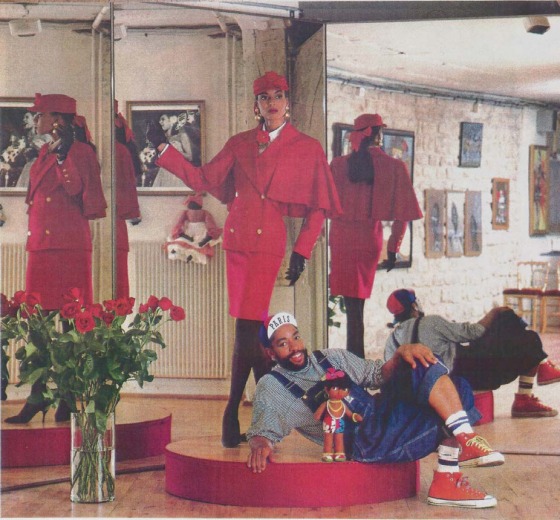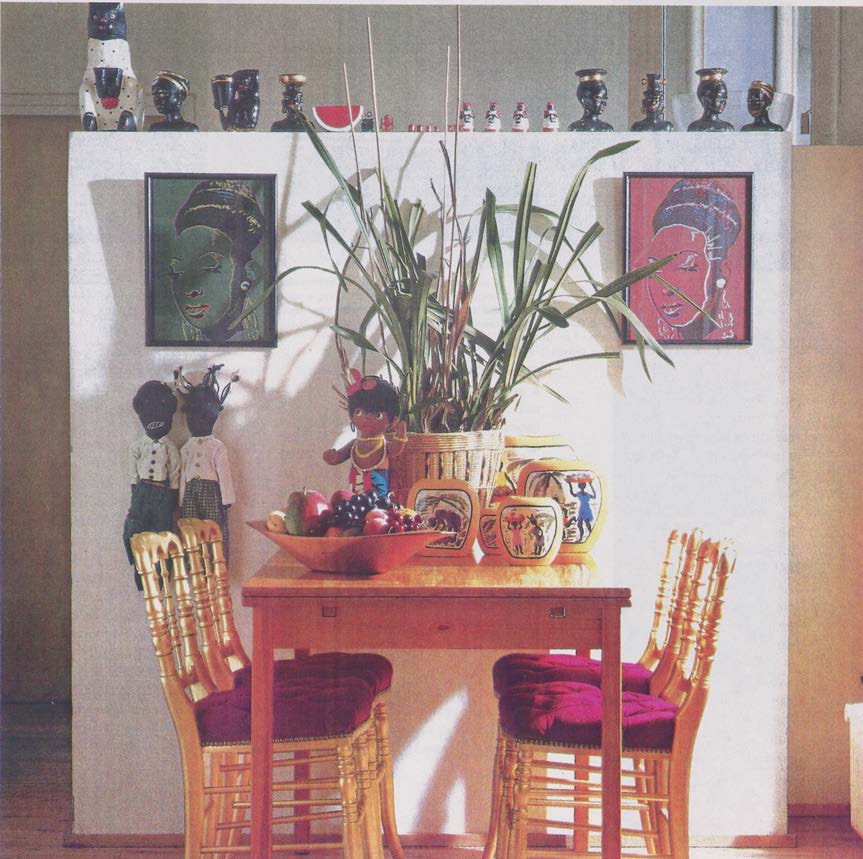A one-way ticket from supermodel Pat Cleveland brought American designer Patrick Kelly to Paris in 1979 to try his luck at high fashion. Kelly spent several years freelancing as a designer, and by 1985 created Patrick Kelly Paris with his business and life partner, Bjorn Guil Amelan. The American apparel company Warnaco signed the designer in 1987, and in 1988 Kelly became the first American and first Black designer elected to the Chambre Syndicale du Prêt-à-Porter des Couturiers et des Créateurs de Mode. Kelly’s meteoric rise, from selling his designs on the streets of Paris to admission into this prestigious fraternity of ready-to-wear designers, was unprecedented and remains unmatched.
Kelly chose not to reveal his true birth year during his lifetime, but public records document his birth on September 24, 1954, in Vicksburg, Mississippi. Kelly became interested in fashion at an early age and in 1972 attended Jackson State University for eighteen months, studying art history, art education, and African American history. In 1974, he moved to Atlanta, where he opened a small shop in the back of a beauty salon, participated in local fashion shows, and styled the shop and windows of Atlanta’s Yves Saint Laurent Rive Gauche boutique. Kelly moved to New York in 1978 and briefly enrolled in Parsons School of Design before arriving in Paris a year later.
In addition to his contributions to fashion, Patrick Kelly is remembered for his generous, exuberant personality and as a loyal, down-to-earth friend, but he was also a sharp businessperson and savvy marketer. Kelly’s playful, colorful designs brought fun to fashion; as he often said, “I want my clothes to make you smile.” At the same time, his work pushed boundaries and boldly addressed Blackness, systemic racism, and queer experience.
This exhibition contains the use of anti-Black racist memorabilia that may be disturbing and potentially traumatizing. It aims to explore Patrick Kelly’s intentions in collecting these objects during the 1980s and provide a space for the critical and respectful exchange of ideas as we continue to think and talk about race in the United States.

